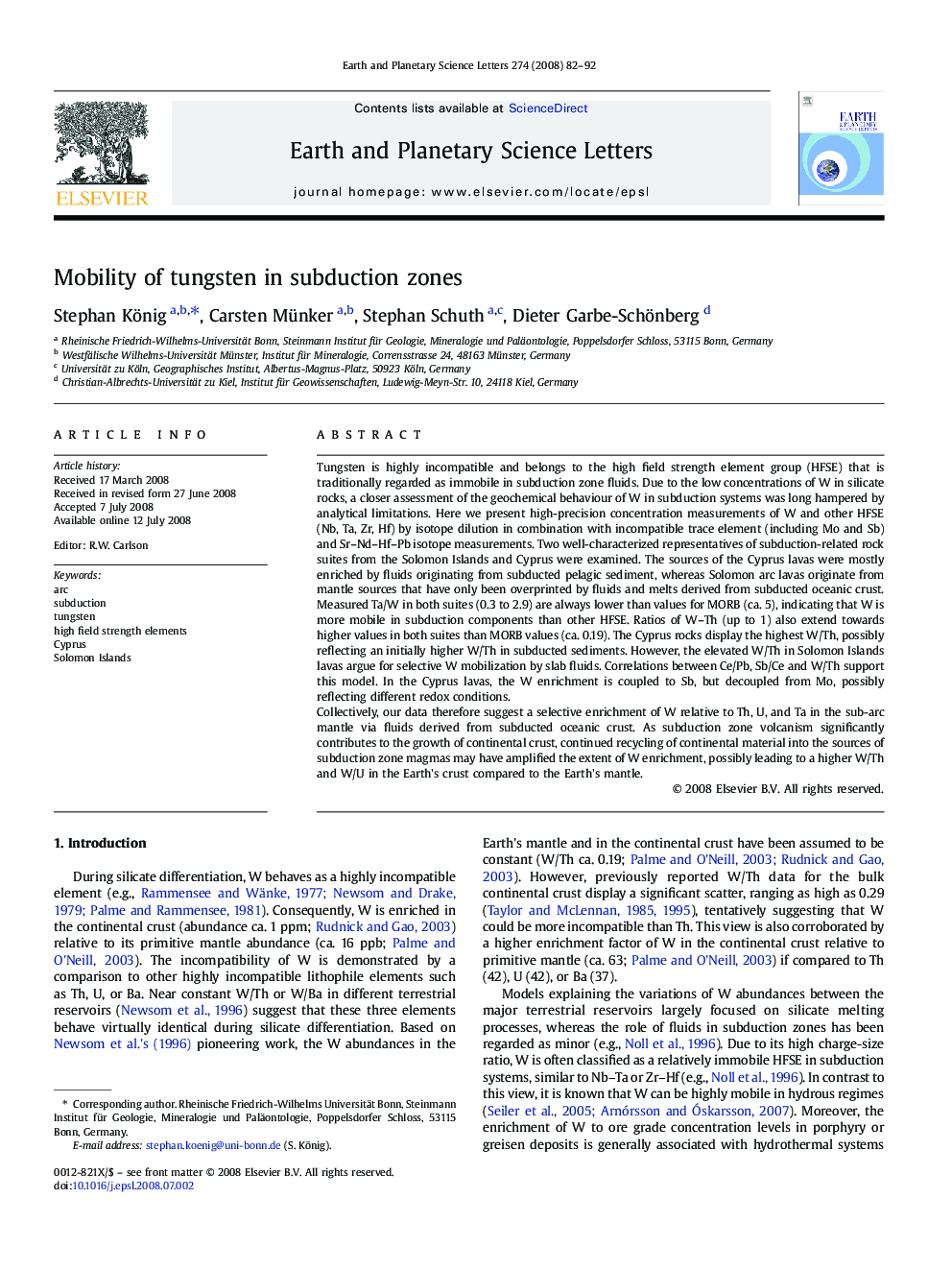| کد مقاله | کد نشریه | سال انتشار | مقاله انگلیسی | نسخه تمام متن |
|---|---|---|---|---|
| 4679383 | 1634888 | 2008 | 11 صفحه PDF | دانلود رایگان |

Tungsten is highly incompatible and belongs to the high field strength element group (HFSE) that is traditionally regarded as immobile in subduction zone fluids. Due to the low concentrations of W in silicate rocks, a closer assessment of the geochemical behaviour of W in subduction systems was long hampered by analytical limitations. Here we present high-precision concentration measurements of W and other HFSE (Nb, Ta, Zr, Hf) by isotope dilution in combination with incompatible trace element (including Mo and Sb) and Sr–Nd–Hf–Pb isotope measurements. Two well-characterized representatives of subduction-related rock suites from the Solomon Islands and Cyprus were examined. The sources of the Cyprus lavas were mostly enriched by fluids originating from subducted pelagic sediment, whereas Solomon arc lavas originate from mantle sources that have only been overprinted by fluids and melts derived from subducted oceanic crust. Measured Ta/W in both suites (0.3 to 2.9) are always lower than values for MORB (ca. 5), indicating that W is more mobile in subduction components than other HFSE. Ratios of W–Th (up to 1) also extend towards higher values in both suites than MORB values (ca. 0.19). The Cyprus rocks display the highest W/Th, possibly reflecting an initially higher W/Th in subducted sediments. However, the elevated W/Th in Solomon Islands lavas argue for selective W mobilization by slab fluids. Correlations between Ce/Pb, Sb/Ce and W/Th support this model. In the Cyprus lavas, the W enrichment is coupled to Sb, but decoupled from Mo, possibly reflecting different redox conditions.Collectively, our data therefore suggest a selective enrichment of W relative to Th, U, and Ta in the sub-arc mantle via fluids derived from subducted oceanic crust. As subduction zone volcanism significantly contributes to the growth of continental crust, continued recycling of continental material into the sources of subduction zone magmas may have amplified the extent of W enrichment, possibly leading to a higher W/Th and W/U in the Earth's crust compared to the Earth's mantle.
Journal: Earth and Planetary Science Letters - Volume 274, Issues 1–2, 30 September 2008, Pages 82–92